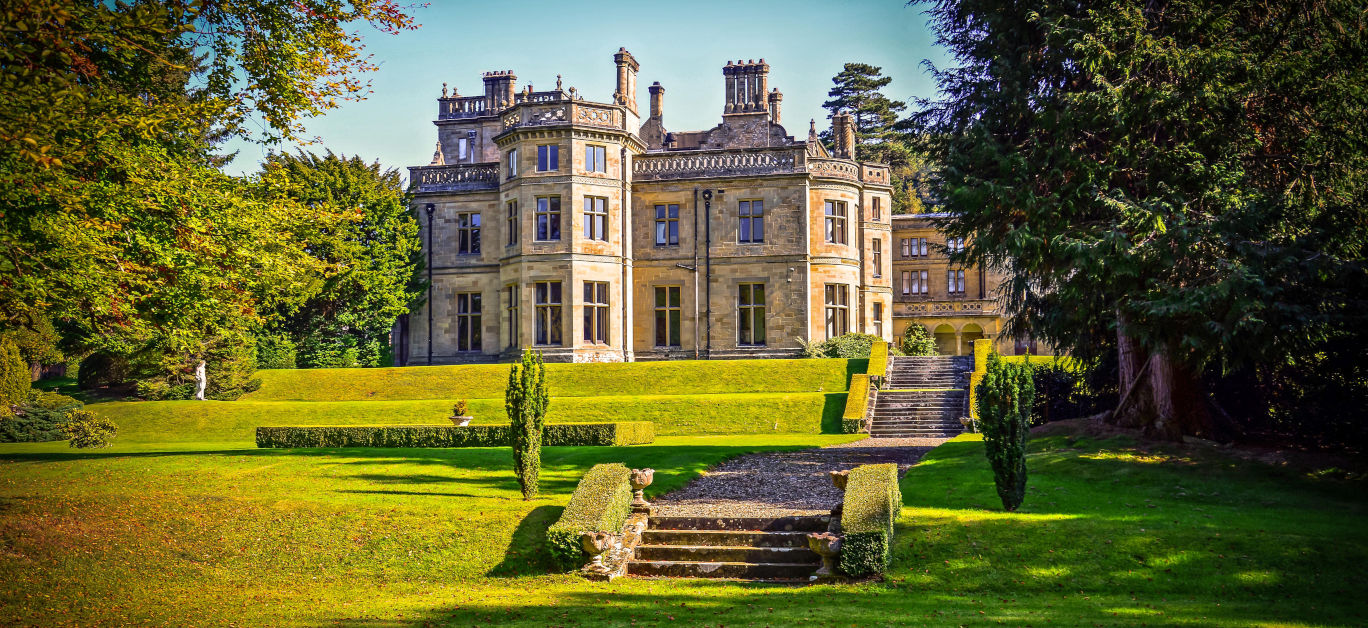Special. That’s the only word I can think of to describe Palé Hall, and yet it’s not nearly enough, too bland and non-descript to explain the pureness, understated elegance, devotion, and magic that lies at the heart of this North Wales hotel.
From the moment you enter the property, it’s like a veil has been placed around its perimeter, or the hotel is situated in a type of snow globe where everything is charmed. The immaculate, daffodil-lined lawns are covered with over 40 rabbits going about their hopping business. Squirrels also make an appearance, while the intensely rural countryside acts as camouflage for the choir of tuneful birds.
And all this is before you’ve reached Palé Hall itself, which greets us with a valet parking sign and attentive staff opening the enormous front doors of the majestic period building. To look on it leaves me speechless, as does the interior, with its no-reception layout, crackling fires, grand staircase, and heritage that leaves me in no doubt that I’ve touched down in a stately home that’s now personally mine for the duration of my stay. The phrase ‘home away from home’ has never been more appropriate in describing a place.
Hotel
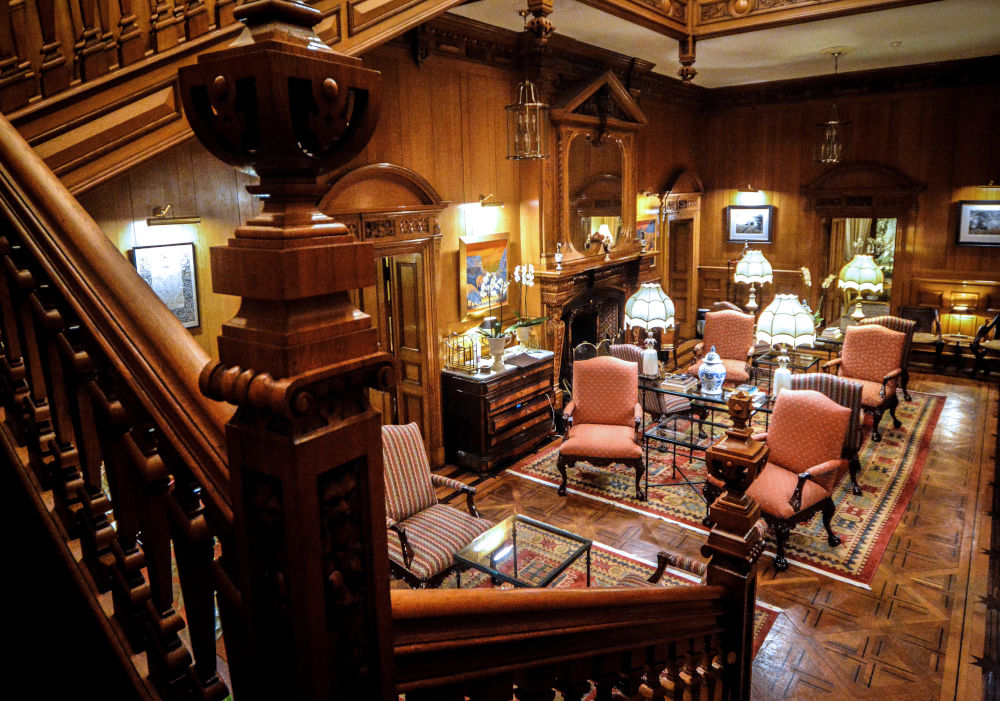
As I cruise down country roads boarded by hotchpotch stone walls and rolling fields infused with grazing sheep and cantering horses, it starts to feel like I’m travelling further and further into an uninhabited vale. I’m four miles from Bala, a rural town on the edge of the Snowdonia National Park, and around me is the tranquil Dee Valley, backed by mountains and woodlands. Amid all this, concealed from sight by the very trees that make the countryside breath-taking, is Palé Hall, a Victorian manor house built in an eclectic Jacobean style.
The house was originally designed by architect Samuel Pountney Smith for railway engineer Henry Robertson between 1868-1871. Smith was given creative reign and no expense was spared, which is just as well for us because the property still retains its rich aesthetic, including a clock tower, a spire, stained-glass windows, gold-plated ceilings, and a porte cochère. It’s easy to image a stately carriage rolling to a stop here.
Thanks to its current owners, Alan and Angela Harper – who used the finest local craftsmen and Angela’s creative eye – each room looks stuck in a different era. But more importantly, as a friendly staff member said, “the owners didn’t want [Palé] to feel like a hotel, but rather when guests walk in, they’re stepping into their own space”. It truly feels that way, and I imagine this must be the reason why Queen Victoria and Winston Churchill both sojourned here.
Palé Hall was awarded a Michelin Green Star because of its eco-friendly approaches. For instance, the hotel has its own carbon-neutral energy source, thanks to the on-site hydroelectric plant. Sustainability is also at the heart of the kitchen, with head chef Gareth Stevenson championing seasonal and local produce. So, when you stay at Palé Hall, you can soak up all the luxuries while knowing the team is giving back to the environment and local suppliers.
Room
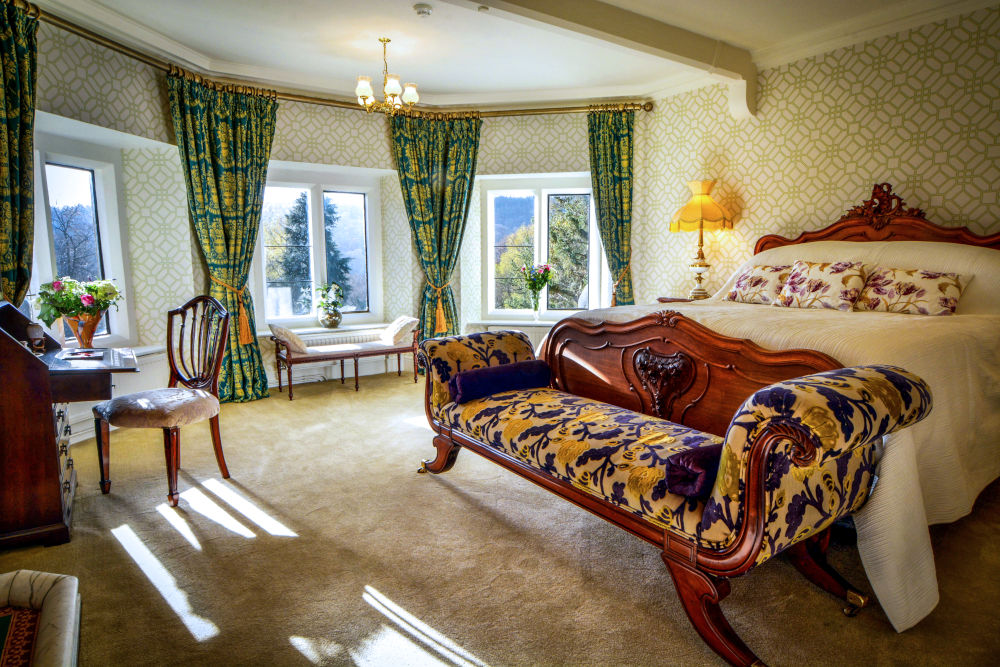
These are the best hotel rooms I’ve ever seen. There are so many descriptors that roll off the tongue when discussing them: large, sumptuous, beautiful, artsy, daring, palatial, quintessentially British, comfy, and so much more.
Of the 18 stylish bedrooms, I stayed in the Caernarfon master room; and while this wasn’t termed a superior suite, I was told on more than one occasion it was the best of them all. I managed to peek into a few other rooms, including the Churchill superior suite, and all looked equally as magnificent as mine. But after two nights in Caernarfon, I could see why it was a favourite amongst the staff.
No two rooms are the same, and Caernarfon really digs into the light and airy nature of the area’s environment. For me, the statement piece was the enormous Victorian windows and curtains that could easily measure the length of a normal dining room. They’re so big, I had to ask the turndown service staff to close them for me. Now that felt like a true Downton Abbey moment!
Outside these windows is by far the best view of the gardens and clock tower – the chiming of which, on the hour, ricocheted through the room. The colourful blooms outside were translated onto the walls with an intricate wallpaper design and framed images of flowers. These complemented the antique, roll-top, chrome bateaux bathtub that sat romantically in the main room, and the curved headboards of the beds, settee, vanity table, and floral-patterned wooden chairs and writing table.
There’s a timeless grace to the décor, and you’ll find a fine Welsh bottle of mead awaiting you on the vanity table, while the TV is disguised as a framed mirror. If you’re not comfortable with the bath being in the room, there is an adjoining bathroom with a large walk-in shower.
For families, there are four garden suites and cottages within the grounds that are equally sumptuous and also dog friendly.
Food and drink
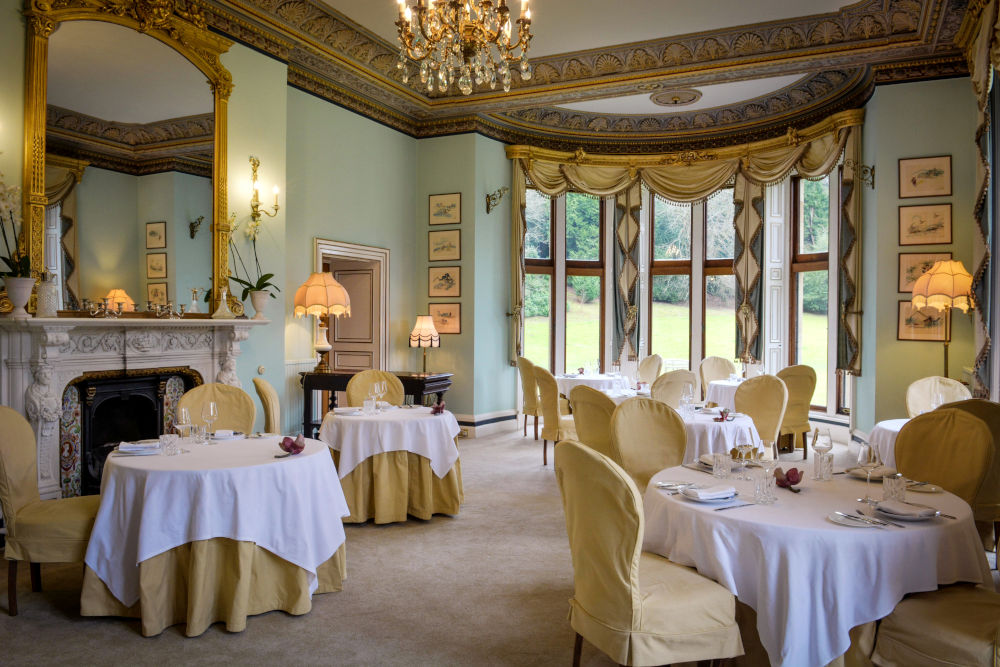
Almost the first thing I was told was that “dinner is like a theatre performance. It takes a long time but it’s artwork”. So, I had high expectations and, boy, was I not disappointed, as head chef Gareth Stevenson is a culinary wizard.
Even before we entered the dining room, we were greeted by Debbie Cappadona, the general manager, who escorted us to the period armchairs in the main hall, where a crackling fire filled the ear. The staff are nimble-footed and appear just when you need them to, taking our drinks order and presenting canapés of beetroot-looking macrons and fried butternut squash and apple.
The five or eight-course tasting menu can only be described as a work of art, and my favourite dishes were the braised white asparagus with wild garlic and broad beans, and the glazed Welsh black ox cheek with shallots and horseradish.
In a similar vein, lunch is either two or three courses, and the tomato and basil orzo with confit heirloom tomato was perfect for a light afternoon bite.
Breakfast is served in the bar, with soft instrumental music playing in the background. There is a continental selection or the choice of a cooked Welsh breakfast. My favourite was the avocado on sourdough toast with scrambled eggs and it’s also worth noting that the chef, for any meal, is happy to cater for allergies.
To do
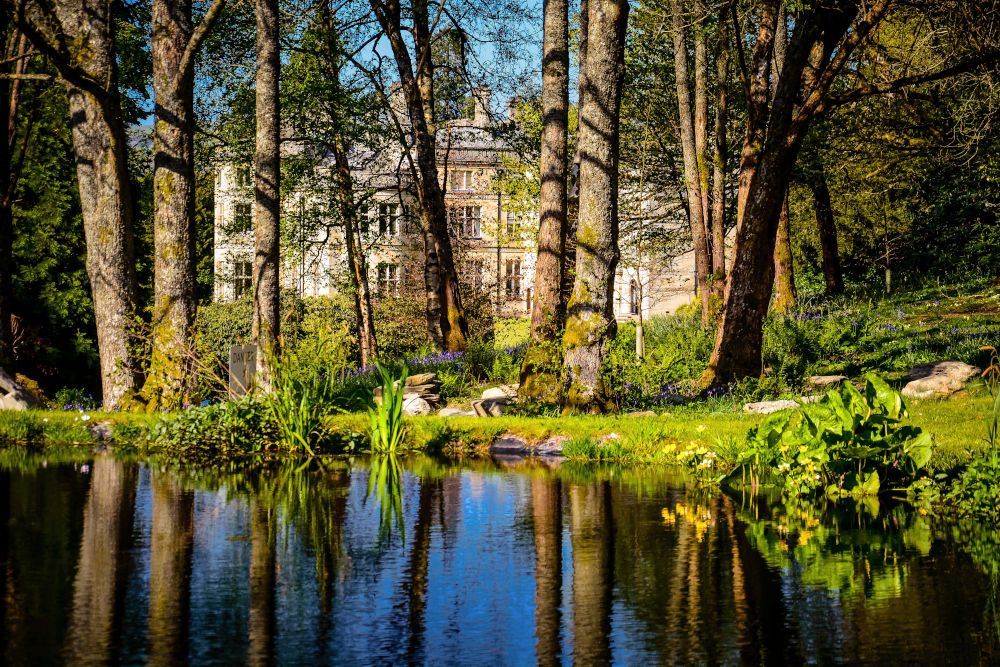
Palé Hall is so relaxing that I was happy to sit in the lounge and read a book all day. For those who are more active, there is a wonderful walk around the estate, going past a pond, sheep, woodlands, and a natural waterfall that runs over stones and near interesting rock features. Llangollen is also only a short drive away and has a great steam train experience and waterside eateries.
In a nutshell
Palé Hall is the best hotel I’ve ever stayed in. The rooms were decadent but homely, the food was extraordinary, and the staff were so friendly and funny that it felt like I was staying with family rather than in a hotel.
Factbox
An overnight stay at Palé Hall costs from £245 for two sharing a classic room, including breakfast.
Address: Palé Estate, Llandderfel, Bala, Gwynedd, LL23 7PS
Phone: 01678 530 285
Website: palehall.co.uk












